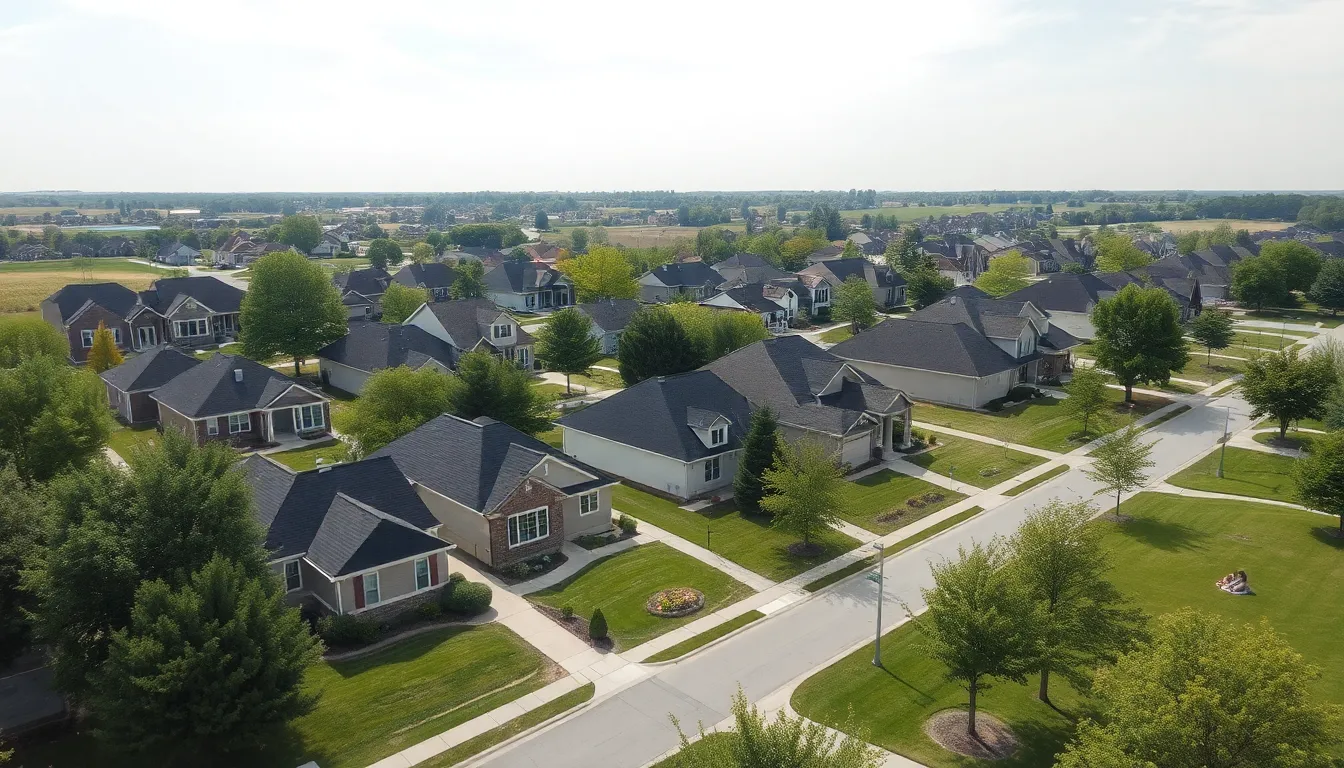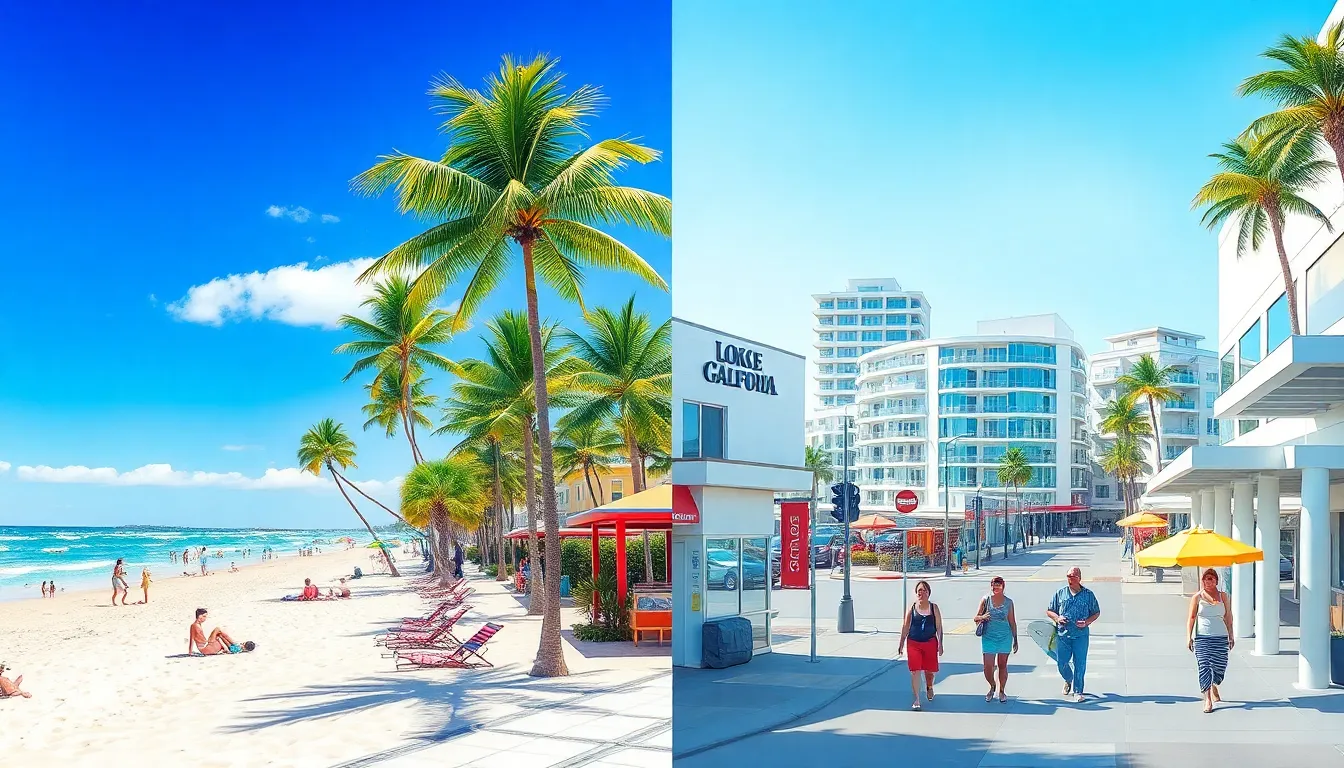Indiana might not be the first place that pops to mind when you think of paradise, but it’s got a charm that’s hard to resist. With rolling cornfields, friendly faces, and a cost of living that won’t have your wallet crying for mercy, it’s worth a closer look. Whether you’re dreaming of a cozy home in a small town or a bustling life in Indianapolis, Indiana offers a budget-friendly lifestyle that makes living here a breeze.
Imagine enjoying all the perks of life without the hefty price tag. From affordable housing to wallet-friendly groceries, Indiana’s cost of living is a breath of fresh air compared to pricier states. So, if you’re ready to trade in sky-high rents for a slice of Midwestern bliss, buckle up as we dive into the delightful details of what it really costs to call Indiana home.
Table of Contents
ToggleOverview Of Cost Of Living In Indiana
Cost of living in Indiana ranks significantly lower than the national average. Housing expenses represent one of the most considerable savings, often about 20% less than in other states. For example, the median home price in Indiana approximates $200,000, while many coastal states exceed $400,000.
Groceries also present a more affordable option. Individuals can expect to spend roughly $150 to $200 per month on basic food items. This cost remains competitive, particularly in cities like Indianapolis, where larger supermarkets offer discounts.
Transportation costs vary depending on location. In urban centers, public transportation is accessible and affordable, while rural areas may require reliance on personal vehicles. Gas prices usually hover around $3.30 per gallon, which aligns closely with the national average.
Healthcare costs are another vital component. Indiana’s healthcare expenses remain approximately 5% lower than the national median. Residents might pay $350 per month for insurance coverage, though individual circumstances can alter rates.
Utilities also reflect affordability. Monthly utility bills, including electricity, water, and internet, can average between $150 and $200. This allows for budget-conscious living without compromising comfort.
Educational expenses in Indiana exhibit reasonable tuition rates. In-state university tuition often falls around $10,000 annually, compared to out-of-state tuition, which can reach $30,000. This emphasis on education enhances the overall value of living in Indiana.
Individuals seeking an economical lifestyle should consider the diverse benefits of living in Indiana. The state’s blend of affordable housing, groceries, transportation, and healthcare makes it a compelling choice for families and individuals alike.
Key Factors Influencing Cost Of Living

Several key factors determine the cost of living in Indiana. Understanding these can help potential residents plan their finances effectively.
Housing Expenses
Housing expenses represent a significant portion of living costs in Indiana. A median home price of approximately $200,000 illustrates affordability, which is about 20% lower than the national average. Renters also find relief, with average monthly rent for a two-bedroom apartment around $1,100. Many affordable neighborhoods exist, particularly in cities like Indianapolis and Fort Wayne. These low housing costs enable residents to allocate funds towards savings or leisure activities, enhancing overall quality of life.
Transportation Costs
Transportation costs vary across Indiana, depending on urban or rural residency. Gas prices average around $3.30 per gallon, making it manageable for commuters. Public transportation options are widely available in larger cities, with bus services serving many areas. Urban residents typically spend less on transportation compared to their rural counterparts. Many choose to use bicycles or walk for short distances, promoting healthier lifestyles while saving money.
Food and Grocery Prices
Food and grocery prices remain another impactful factor in Indiana’s cost of living. Monthly grocery bills for individuals typically range from $150 to $200, ensuring affordability for residents. Local markets and supermarkets often provide competitive pricing, supporting easier budgeting. Dining out is also reasonably priced, with many restaurants offering meals under $15. This affordability contributes to a favorable lifestyle, allowing for both home-cooked meals and dining experiences.
Comparison With Other States
The cost of living in Indiana stands favorably when compared to many other states in the U.S. Affordability draws individuals seeking budget-friendly options, particularly in housing and groceries.
Regional Differences Within Indiana
Variations exist in living costs across Indiana’s regions. Major cities like Indianapolis and Fort Wayne often show higher housing prices than rural areas. Though urban centers attract higher rents, they also offer better job prospects and amenities. Suburban neighborhoods near these cities present a balance of affordability and accessibility. Rural communities typically provide lower housing costs, with some towns reporting median home prices below $150,000. Choosing where to live in Indiana requires considering these regional differences to match individual preferences.
National Averages
Indiana’s overall cost of living falls significantly below the national average. Housing expenses in Indiana average about 20% lower than the U.S. national figure, with median home prices around $200,000. Compared to states like California or New York, where median home prices reach $800,000, Indiana’s affordability becomes evident. Monthly rent for a two-bedroom apartment hovers around $1,100, competing well with national averages. Groceries also prove economical, costing between $150 to $200 monthly. Each of these factors contributes to Indiana’s strong position as an affordable living option.
Living in Different Cities In Indiana
Indiana’s various cities offer unique living experiences, with cost of living varying significantly across regions. Each city presents its own advantages and challenges.
Indianapolis
Indianapolis serves as the capital and largest city of Indiana. Housing costs in Indianapolis are higher than the state average, with median home prices around $240,000. Renters face average monthly rents of about $1,300 for two-bedroom apartments. Groceries remain affordable, averaging $200 monthly. Dining options are plentiful, with meal prices generally under $15. Public transportation is accessible, while gas prices hover near $3.30 per gallon. Job prospects benefit from a diverse economy, making Indianapolis attractive for career growth.
Fort Wayne
Fort Wayne is Indiana’s second-largest city. The cost of living here is lower than in Indianapolis, with median home prices around $180,000. Monthly rent for a two-bedroom apartment typically sits at $1,000. Grocery expenses average between $150 and $180, which keeps overall living costs reasonable. Dining out remains budget-friendly, with many options under $15. Public transportation is limited, so many residents rely on personal vehicles. The city’s growing economy offers ample job opportunities, especially in manufacturing and healthcare.
Bloomington
Bloomington is well-known for its university atmosphere. Living costs are moderate, with median home prices around $220,000. Rent for two-bedroom apartments averages $1,200 monthly. Grocery bills typically range from $150 to $200, making it manageable for many residents. Dining options cater to diverse tastes, with meals often under $15. Public transportation is available, though many students and residents prefer biking. The local job market thrives due to the presence of Indiana University, attracting a young and educated population.
Living in Indiana offers a unique blend of affordability and quality of life. With lower housing costs and reasonable grocery prices it’s easy to see why many choose to call this state home. The balance of urban amenities and suburban tranquility adds to its appeal.
Whether in bustling cities like Indianapolis or quieter rural areas residents can enjoy a comfortable lifestyle without breaking the bank. Indiana’s cost of living not only supports financial stability but also fosters a sense of community and belonging. This makes it an attractive option for families young professionals and retirees alike.






